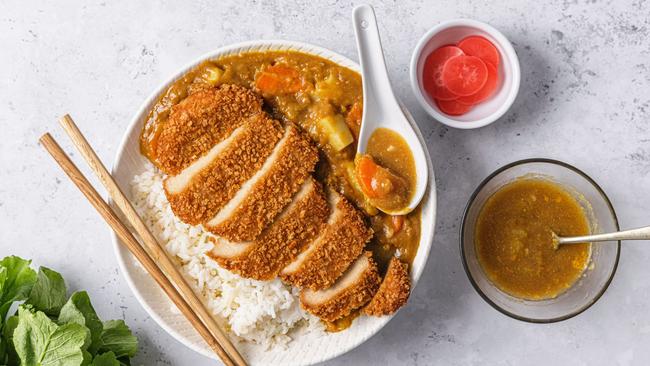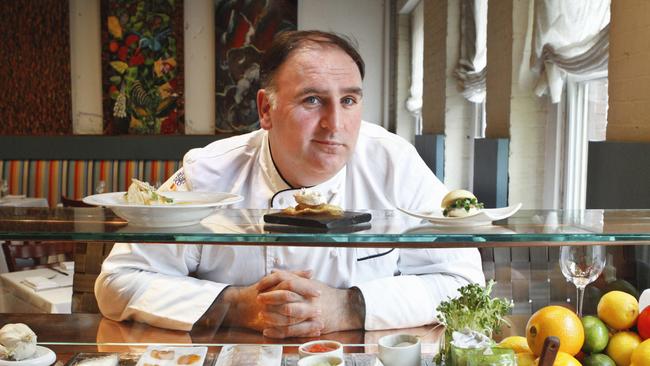I’ll have the coq au sham . . . lab chicken set for menus
Michelin starred restaurateur Jose Andres is racing to become the first chef to use man-made chicken created from animal cells in his restaurant.

Jose Andres moved to America after learning his trade with Ferran Adria, whose Spanish restaurant, El Bulli, can stake a claim to be the birthplace of molecular gastronomy. He soon established a reputation for harnessing science to taste, earning two Michelin stars for his “avant-garde tasting counter minibar” in Washington DC.
His latest move may be his boldest, however. Andres is racing to become the first chef to use man-made chicken created from animal cells.
Upside Foods and Good Meat, two Californian companies, have been given approval to sell their “lab grown” meat products by the US Department of Agriculture, they said this week. The Food and Drug Administration had already deemed them safe to eat.
“The future of our planet depends on how we feed ourselves . . . and we have a responsibility to look beyond the horizon for smarter, sustainable ways to eat,” said Andres, who was among the first to order the products. “I’m excited for everyone to taste the result.”
Its proponents say that laboratory-grown meat significantly reduces the environmental impact of farming and eliminates harm to animals. A recent study found, however, that in the case of beef at least, its environmental impact was likely to be “orders of magnitude” higher than traditional methods’.
“This approval will fundamentally change how meat makes it to our table,” Uma Valeti, founder of Upside Foods, said. "It’s a giant step forward towards a more sustainable future – one that preserves choice and life.”

Joinn Biologics, a manufacturer that works with Good Meat, was also cleared to make the products.
Cultivated meat is grown in steel tanks, using cells from a living animal, a fertilised egg or a bank of stored cells. After several weeks, the product is “harvested” and moulded into shapes, such as a chicken fillet.
Some of America’s leading restaurants will soon feature lab-grown chicken. Upside Foods said its first order had been placed by Bar Crenn in San Francisco, run by Dominique Crenn, the first female chef in the US to win three Michelin stars. Good Meat dishes will be served in at least one of Andres’ Washington restaurants.
It may be a while before cultivated chicken can be found in supermarkets, however. Lab-grown meat is far more expensive to produce than farmed meat and cannot yet be produced on the same scale, said Ricardo San Martin, director of the Alt: Meat Lab at University of California, Berkeley. He is concerned that it may end up as a product for the wealthy, reducing any environmental benefits.
Neither Upside nor Good Meat has said how much a chicken cutlet would cost. Eventually, the price of cultivated chicken is expected to rival the best organic alternatives, which sell for up to dollars 20 a pound.
Globally, more than 150 companies are focusing on making meat from cells.
Amy Chen, Upside’s chief operating officer, said that the most common response to taste tests was, “Oh, it tastes like chicken” but some consumers did have doubts. “We call it the ick factor.”
Behind the story
One day, wrote Winston Churchill in 1931, “we shall escape the absurdity of growing a whole chicken in order to eat the breast or wing”. Approval for the sale of lab-grown chicken is one step on the path to Churchill’s dream. But artificial meat’s future remains uncertain. Why?
Ten years ago, with some fanfare, a Dutch team invited food writers to taste their early effort at a cultivated beef patty. Everyone was complimentary. Equally, one described it as like an “animal protein cake”. It clearly wasn’t a burger.
The companies behind the lab-grown chicken think they have surmounted the texture problem. It will not only be shareholders scrutinising what happens next, though. For some, it is enough that a chicken was not killed for their nugget. But for Churchill the point was costs, which today includes environmental ones. Artificial meat requires a medium to grow. For a long time that medium was foetal bovine serum, which was not merely expensive but came from a cow. Alternatives are still costly.
Last year, a study claimed that artificial beef, far from being better for the environment, could be 25 times worse. For chicken, the calculus is even less appealing. Yet, it is reasonable to assume it can be improved. Clearly, it is possible to make chicken and beef more economically – that’s what a cow and chicken do.
by Tom Whipple
The Times







To join the conversation, please log in. Don't have an account? Register
Join the conversation, you are commenting as Logout